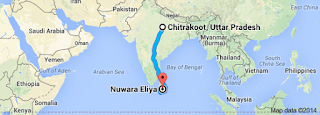The idea of creating a Storybook and being able to build on
to something that interests us as individuals really excited me. I am already
considering building a story around Krishna but that may change as we dive into
the next few weeks.
I was super impressed by Brittany Rodgers’ The Magic Map. First of all, I loved this title and thought it did an excellent job of hinting at what the story was about but at the same time hooking the reader into wanting to know more - this combination is key to writing a good story. Secondly, Brittany's writing was not only creative but detailed which made her story that much
better, and now I can see why you encourage us to include images in our blog
posts… it really makes all of the difference!
Two particular images stood out to me in The Magic Map.
1. A visual such as this majestic mountain sets the stage for the reader:
2. A map like this provides the reader with perspective for just how far the character must journey:
Kate Carlton’s Delilah’s Radio Hour was much different from
The Magic Map. For me, this difference was due to the fact that they had such
different settings and time periods. Personally, I preferred those of The Magic
Map, but I am happy to see that there is so much flexibility in the choices we
can make while creating a Storybook.
I really enjoyed the Storybook Rama and Sita: Not So Happily Ever After because the author did a great job seamlessly turning a sacred story into a modern tale of love. I think that this could be hard to do without making it sound too corny or like you’re trying too hard to “make it work”, which I felt that I was doing a bit when retelling my nursery rhyme Moderation is Key, but I never sensed either of these feelings when reading Rama and Sita.
The images in Rama and Sita showed me the value of eye-catching colors such as those in this image:
I could not believe just how many very impressive storybooks have been created by students in your Epics of India and Myth-Folklore class!!




